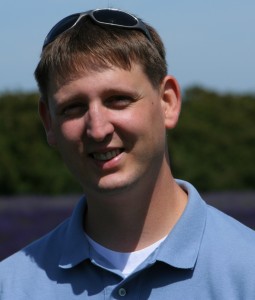Therese Rowley. Mapping a New Reality: Discovering intuitive intelligence. Author, 2012.
Mark Harman


Mark Harman
As one reads the book, Mapping a New Reality by Dr. Rowley, it is quickly observed that she strives to encourage the reader to explore and find the patterns and interconnectedness among their personal experiences. Conceptually, the experience is similar to constructing a Tony Buzan ‘Mind Map’ of your life, thoughts and experiences and seeing how they are connected with each other.
Conceptual Overview
As the patterns are recognized, Dr. Rowley inserts her explanation of this phenomenon as the ‘invisible map of reality’ we all hold. Rowley’s ‘invisible map’ concept is best described as part Behavioral Psychology, part Cognitive Psychology, and part Rational Emotive Therapy with a dash of Jungian flare. One’s invisible map is the culmination of positive and negative reinforcements experienced throughout life, but with a spiritual component that urges one as well. Recognizing this invisible map allows one to choose behaviors, circumstances, and desires that are more in-line with our true spiritual gifts and destiny. By aligning ourselves more with our spiritual purpose, we experience more happiness, success, and fulfillment.
Summary
Part autobiography, part Christo-Jungian behavioral self-exploration, and part challenge of the current educational establishment, Therese Rowley’s book, Mapping a New Reality was an interesting read. Drawing extensively on her upbringing in catholic mysticism, Dr. Rowley, gives many a metaphysical explanations for not only the behavior of others, but of ourselves as well.
Part one of the book is Dr. Rowley’s autobiography and anecdotes of personal experiences. The intent of this section is to give the reader a personal account and example of someone struggling through the process Dr. Rowley advocates. Who better to use as an example but oneself? Utilizing both positive and negative experiences from her childhood to adulthood, Rowley demonstrates the evolution of her theory and worldview to her readers. She also gifts the reader with a thorough understanding of the interconnectedness of life events and begins to draw the territories of the invisible map inside us all. As Rowley’s personal experiences in life, business, and therapy are laid bare to the reader, one cannot help but agree that acknowledging intuition as a component of intelligence delivers wondrous benefits to both ourselves and the world at large.
Part two of the book builds on the base understanding of our invisible map and begins to delineate its elements and territories through stories of Rowley’s patients, clients, and even friends. Dr. Rowley breaks the invisible map into four elements or territories: Life purpose, fear-based beliefs, soul lessons, and essential gifs. She then aptly reinforces her concepts by explaining an element of the invisible map and then providing a story illustrating the how, what, and why of the element. Interwoven into the discussion of each of these territories is an underlying focus on the metaphysical and how it influences and acts on our experiences. From Jung’s idea of collective consciousness, which Rowley terms Ancestral Patterns, to a discussion on spiritual ‘energies’ and ‘sighted’, Rowley asserts that all have their place in the invisible map of reality.
Part three, the final section, of Dr. Rowley’s book examines the need for society to view intuition as a legitimate component of intelligence. Rowley often and passionately claims the current dramatic increase in diagnosis of learning disorders in children is, in fact, a misinterpretation of individuals with exceptionally high intuition.
Analysis
As a former Psychiatrist and Therapist, I struggled with this book. Dr. Rowley’s explanations and concepts were often far too similar to already established theorists, yet she did not acknowledge this. Secondly, Dr. Rowley would often claim conversations and or opinions from professionals in the fields of Medicine, Neuroscience, and more, but did not properly cite these sources. This brings her credibility into question.
I too believe that there is a small epidemic of over-diagnosis of learning disorders, however, that does not provide substantiation that they are not real or problems for individuals. I was diagnosed with Attention Deficit-Hyperactivity Disorder, the learning disorder Dr. Rowley attacks most often as not existing but is actually a hyper-intuitive issue, at a very young age. My mother, however, not only refused to allow me to be put on medication, but never informed me of my diagnosis. This resulted in a number of very negative experiences for me, including almost failing out of college. When I was finally re-diagnosed and given the proper treatments, my grades, confidence, and life dramatically improved. I respect Dr. Rowley’s viewpoint, but do not agree that all ADHD/AD children simply need to be put in an environment where their intuition can be encouraged.
I would recommend this book to someone who is willing to keep an open mind, whether they agree or disagree with her spiritual and conceptual theories. Reading Dr. Rowley’s book will very well expand one’s ability to see reality and problems from a very unique angle and improving one’s ability to suppress judgment until the entire problem has been explained. Readers will also benefit from the spiritual development components Dr. Rowley emphasizes.
